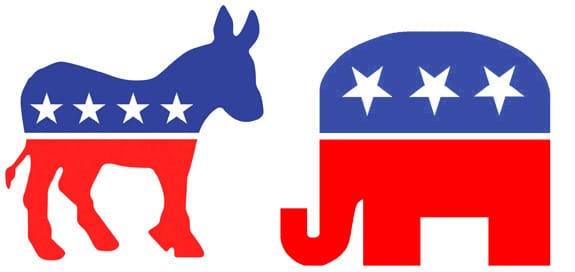Upworthy is a news aggregation site that aims to “make important stuff as viral as a video of some idiot surfing off his roof.” It seems to be working. The growth of the young site may be as fast as has ever been seen. Whenever you see a story about drone strikes, same-sex marriage, or gender bias with an irresistible, link-bait title, it’s probably Upworthy’s doing.
The important stories Upworthy champions make a liberal feel at home, which is probably a good thing for the company’s Google Analytics. Because if they focused on important conservative stories, it would probably never work.
They cynical and fairly well established take on the Internet’s effect on political awareness is that rather than making everyone better informed, it produces an echo chamber where liberals and conservatives each spend their time reading and watching news that validates their own beliefs and political views.
But there are interesting variations in how each echo chamber works – something examined in a recent study, “Life in the Bubble: Examining the Forwarding of Political Videos.” The professors behind the study wanted to understand how political orientation influences people’s tendency to share political videos. To find out, they showed participants advertisements from Republicans and Democrats that were either positive or negative and then observed which they decided to share and with whom. They found that:
- Democrats forwarded political information when it elicited positive emotion.
- Democrats were not politically or dispositionally similar to the targets of their forwards.
- Republicans forwarded political information when it elicited negative emotion.
- Republicans were politically and dispositionally similar to the targets of their forwards.
Members of both parties preferred their own party’s materials. But liberals shared uplifting, liberal messages with everyone while conservatives shared negative (ie attack ads or similar), conservative videos, but only with like-minded conservatives.
These results strike us as intuitive. Liberalism is more predicated on a belief in the ability to work for a better future. In contrast, conservativism distrusts people’s ability to change and reinvent circumstances for the better, so it looks to the past as a guide.
Upworthy works so well because it taps into this dynamic. Their liberal readers like sharing uplifting stories widely. But a conservative Upworthy would not work as well because even if you posted important but negative stories (Downworthy?) to go along with conservatives’ tendency to share negative news, they still share posts more insularly.
If we speculate about the future, this has an interesting implication for online news. It’s not just bloggers who take note of how many people “Like” their posts. Journalists do as well. No less prestigious a publication than The Atlantic has described how editors and writers constantly monitor the number of people who read an article as well as the number of people who share, Like, and tweet it. That’s true of articles regardless of whether they are written by “a web writer, or a newspaper reporter, or a far-afield staff writer.” As news continues to migrate online, these metric-driven journalists are likely to act on the fact that liberal stories seem to be shared and read more frequently. That would be a very strong incentive to lean left.
The “liberal bias” of American media is a constant right-wing complaint. We won’t weigh in on its existence here. But until conservatives start sharing stories like their friends across the aisle, there may very well be one online.
This post was written by Alex Mayyasi. Follow him on Twitter here or Google Plus. To get occasional notifications when we write blog posts, sign up for our email list.




